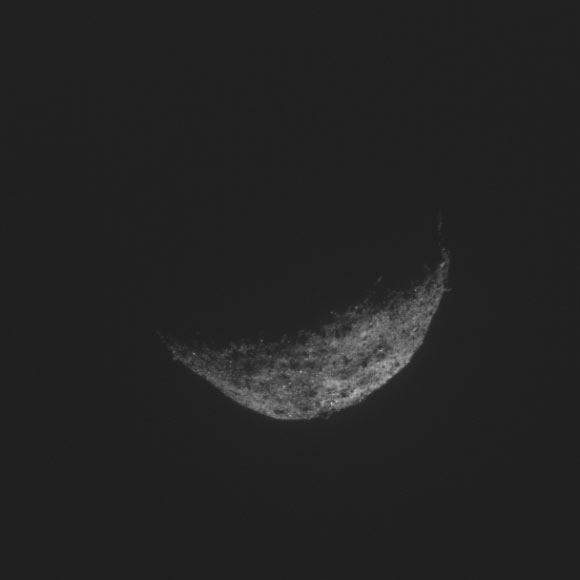On May 10, 2021, NASA’s OSIRIS-REx spacecraft fired its main engines full throttle for seven minutes; this burn thrust the spacecraft away from the asteroid Bennu at 1,000 kmh (600 mph), setting it on a 2.5-year cruise towards Earth.

This image of the near-Earth asteroid Bennu was captured on April 9, 2021, by NASA’s OSIRIS-REx spacecraft. Image credit: NASA / NASA’s Goddard Space Flight Center / University of Arizona.
“OSIRIS-REx’s many accomplishments demonstrated the daring and innovate way in which exploration unfolds in real time,” said Dr. Thomas Zurbuchen, associate administrator for science at NASA Headquarters.
“The team rose to the challenge, and now we have a primordial piece of our Solar System headed back to Earth where many generations of researchers can unlock its secrets.”
After orbiting the Sun twice, the OSIRIS-REx spacecraft is due to reach Earth on September 24, 2023.
Upon return, the capsule containing pieces of Bennu will separate from the rest of the spacecraft and enter Earth’s atmosphere.
The capsule will parachute to the Utah Test and Training Range in Utah’s West Desert, where scientists will be waiting to retrieve it.
“There’s a lot of emotion within the team about departure,” said OSIRIS-REx deputy project manager Dr. Mike Moreau, a researcher at NASA’s Goddard Space Flight Center.
“I think everyone has a great sense of accomplishment, because we faced all these daunting tasks and were able to accomplish all the objectives thrown at us.”
“But there’s also some nostalgia and disappointment that this part of the mission is coming to an end.”
To realize the mission’s multi-year plan, the OSIRIS-REx navigation engineers made calculations and wrote computer code to instruct the spacecraft when and how to push itself away from Bennu.
After departing from the asteroid, getting the sample to Earth safely is the team’s next critical goal.
This includes planning future maneuvers to keep the spacecraft on course throughout its journey.
“Our whole mindset has been, ‘Where are we in space relative to Bennu?’ Now our mindset has shifted to ‘Where is the spacecraft in relation to Earth?’” Dr. Moreau said.
_____
This article is based on text provided by the National Aeronautics and Space Administration.







